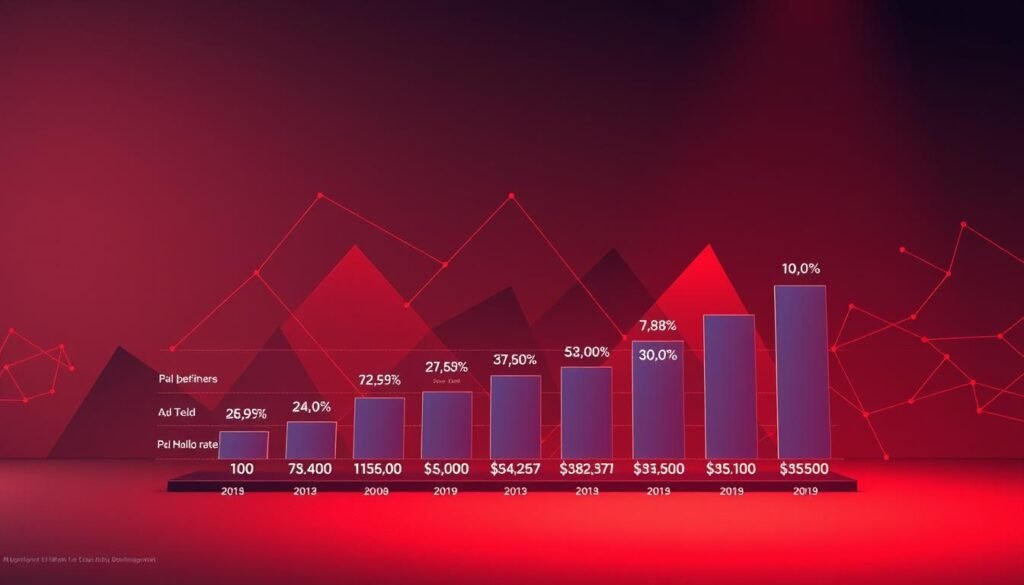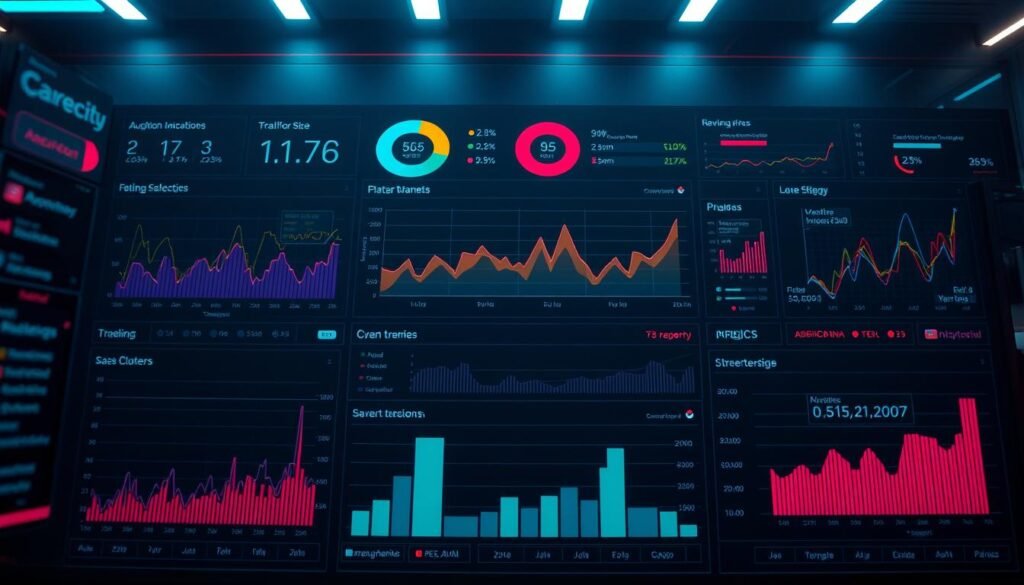The debate about payouts for publishers has shifted from rumor to rules. Recent legal findings that a major ad tech firm holds monopoly power have refocused attention on how platform coupling and policy changes shape revenue. This piece aims to compare real revenue drivers for publishers, not assumptions.
We frame the question in programmatic advertising terms: access to demand, fee structures, auction mechanics, and exchange dynamics that influence net yield. The comparison looks at how supply path choices affect bid density, fill, and what actually lands in a publisher’s account. Readers will find clear factors to benchmark across ssp options and understand how industry shifts can change who captures margin over time.
Key Takeaways
- Focus on demand access and auction mechanics to judge payout potential.
- Compare fee structures and who keeps margin, not just gross bids.
- Supply path and exchange behavior significantly affect yield for publishers.
- Policy and platform coupling can shift revenue distribution quickly.
- Benchmark metrics now to plan a roadmap for 2025 revenue decisions.
Why this comparison matters to publishers in 2025
Court rulings this year have put publisher payouts and platform mechanics into sharp relief. Publishers must now plan for real shifts in pricing, transparency, and operational cost.
Programmatic advertising decisions are no longer about gross CPM alone. Net yield depends on who keeps margin, how the ad server and ssp are bundled, and what data flows are available to optimize auctions. Modeling net outcomes helps a publisher avoid surprises when fees change or demand access shifts.
User intent: maximizing ad revenue with programmatic advertising
Publishers want clear forecasts that include take rates, server costs, and likely changes to demand paths. Better access to auction data can improve price floors and deal strategy. Advertisers benefit when the marketplace is healthier and price signals are clearer.

How antitrust pressures reshape ssp choices and payouts
Remedies under discussion — from decoupling to new adapters — could cut hidden take rates and raise transparency. But they could also introduce explicit server fees and short-term disruption. Publishers should model multiple scenarios to meet revenue needs and protect long‑term pricing power.
Programmatic ecosystem refresher: DSP, SSP, and ad exchange roles
Understanding the stack—buyers, sellers, and the exchange—shows how value flows in programmatic auctions. This short refresher maps who bids, who sells, and where fees crop up so publishers can spot revenue leaks.

How each layer creates and captures revenue
A DSP is the buying engine advertisers use to evaluate inventory and place bids across exchanges. dsps optimize toward audience, performance, and campaign goals so buyers spend efficiently.
An ssp manages publisher inventory, sets floors, and connects to many demand sources to raise yield. ssps bundle impressions and control which buyers can see specific media.
The exchange sits between them as the neutral router that enforces auction rules and scales market access. Competitive auctions and clean data drive higher bids, but platform fees and extra hops can erode the final payout.
Supply path checklist for publishers
Map inventory flow to see where fees and latency appear. Compare which dsps bid most on your audience and which ssp settings lift sell‑through. Reduce hops while keeping buyer reach to protect net yield.
AdX vs Other SSPs
Selecting the right platform can change who bids and how deeply they bid on a publisher’s inventory. Choice affects bid density, reporting clarity, and the final payout.
Access to Google Ads demand and open marketplace dynamics
Google Ads demand is often available through the primary exchange, giving high bid density in open auctions for many publishers. That privileged access can lift fill and headline CPMs in broad-market inventory.

Independent alternatives and their strengths
Independent ssps like Magnite, PubMatic, OpenX, and Xandr broaden demand sources and support header bidding. They offer strong reporting, flexible deals, and competitive video and CTV tools.
Many independent platforms act as an exchange, connecting directly to dsps and advertisers. Market performance often depends on media type and which buyers value your audience most.
For publishers, the right strategy blends platform access with transparency and curated sources. Test advertiser mixes, use multiple pipes, and measure net yield to find the mix that maximizes long‑term revenue.
Who takes what: take rates, CPMs, and effective publisher yield
Net yield comes down to who takes a slice of each bid and how much competition pushes the clearing price up.

Reported take rates and publisher impact
Reported take rates show a big gap: roughly 30% for Google compared to about 10% common among independent ssp platforms. That difference directly reduces net eCPM for publishers when all else is equal.
From gross CPM to net eCPM
Net eCPM equals gross CPM minus platform fees and ad serving costs, adjusted for fill and latency losses. Higher bid density can offset larger fees if the clearing price rises enough to leave a better publisher share.
Floors, auction type, and yield optimization
Price floors, first- vs second-price rules, and soft or hard floors change win rates and payout per impression. Test floors with data-informed rules to avoid underpricing premium inventory while keeping throughput for mid- and long-tail supply.
Model across platforms with apples-to-apples inputs: fee structure, payment cadence, currency effects, and reporting granularity. Include tech features like real-time analytics and DSP-specific deals to see how demand and campaign targeting lift final publisher revenue.
Auction transparency and data access
Auction transparency now determines whether a publisher can act on real-time price signals or only guess at outcomes. Clear visibility into bids, fees, and event timing changes how a marketplace rewards testing and strategy.

Black-box challenges in GAM and implications for optimization
Many publishers only get live pricing for Google demand through the bundled ad server, which makes the auction feel like a black box. This limited data and the server tie constrain how often a platform wins and why it wins.
When server and exchange are linked, publishers lose some levers to experiment with floors and buyer mixes. Advertisers also struggle to see path costs and win/loss reasons, which hinders campaign tuning.
Third-party reporting: paths to supply, pricing clarity, and control
Independent ssp log files give granular, log-level data that reveal supply paths and buyer overlap. That visibility helps publishers manage floors, pack inventory smarter, and test incrementality over time.
Process fixes—standard timestamps, reconciling users and device IDs, and adding a dsp/dsps view of bid distribution—reduce mismatch and build trust. Greater transparency in fees and bid shading supports better outcomes for publishers and advertisers alike.
Header bidding and Prebid: leveling the playing field
Header bidding reshaped how publishers capture value by making demand compete in real time.
Why simultaneous bidding increases competition and yield
Header bidding invites simultaneous bidding from multiple ssp and dsp endpoints. That parallel call pattern raises bid pressure and often lifts clearing prices for impressions.
More bidders also improve price discovery for each auction. Publishers see higher fill and better revenue when buyers respond in the same window.
The potential impact of a Prebid adapter for AdX
A Prebid adapter would route Google demand into the same header framework, letting exchange inventory compete alongside independent ssps. This can boost fairness and make auction outcomes more transparent for publishers and buyers.
Managing latency, wrappers, and demand partners
Technical choices matter: timeouts, adapter selection, and a lightweight wrapper drive the user experience and revenue trade-offs. Curate partners that add unique buyers or improve bid density for your inventory.

Document configuration changes, monitor impression-level discrepancies, and test over full traffic windows to validate results.
Ad server coupling: GAM, DFP bundling, and cost trade-offs
Bundled ad servers can hide costs that quietly shrink publisher revenue over time. What appears free is often absorbed into higher take rates, making ROI hard to measure.

Free vs paid ad server realities and hidden costs
The DFP ad server is commonly bundled, so many publishers treat it as no cost. In practice, those server functions are funded through larger platform margins.
If decoupling happens, explicit server fees may appear. Video servers can charge $0.25–$2 CPM per transaction, so model net eCPM carefully.
Operational impacts if decoupling occurs
Decoupling brings new choices: a publisher may pick a lighter ad server or add a dsp or alternative server to diversify the stack. That can lower single-point risk but raises integration work.
Plan for migration time, billing changes, and data portability. Focus on tech and process needs—identity mapping, discrepancy checks, and SLA expectations—to protect yield and user experience.
Brand safety, controls, and inventory quality
Inventory quality often dictates whether advertisers pay a premium or skip a publisher entirely.
Independent ssp and ssps emphasize tools that let publishers filter categories, block harmful creatives, and run private deals. These controls let teams block keyword lists, scan creatives for malware, and set allowlists for trusted buyers.

Strong brand safety protects audience trust and keeps long-term revenue stable. Advertisers reward clean inventory with higher bids, so safety work often pays for itself.
Evaluate a provider on enforcement speed, policy clarity, and reporting. Good reporting shows top buyers and formats so you can spot risky demand quickly.
Operationally, revisit safety settings quarterly and before major news cycles. Align your editorial brand expectations with platform controls to avoid conflicts and keep monetization predictable.
Identity, privacy, and search power: what changes for payouts
Changes to identifiers will reshape how demand finds audiences and how revenue flows. This section explains the Privacy Sandbox context and what identity shifts mean for payouts and measurement.
Cookies, device IDs, IP, and the Privacy Sandbox context
Google’s Privacy Sandbox proposals change which identifiers persist in Chrome. That alters the raw data available for targeting and measurement.
Legal rulings may slow deprecation of third-party cookies and device IDs in the near term. That gives marketers and agencies more time to test alternative approaches.
How identity shifts affect campaign performance and pricing
When signals drop, advertisers value impressions differently and publishers must repackage audiences to protect yield. Programmatic advertising performance depends on addressability; less signal often pushes budgets toward curated deals and direct buys.
Technical readiness—clean rooms, modeled conversions, cohort methods, and server-side integrations—will favor teams that can match users without overexposing information. DSP and demand alignment keep campaigns measurable at scale.
Search market power also matters: concentration in search can ripple into media pricing, so diversifying identity pipes helps reduce volatility for publishers and advertisers alike.
Formats, channels, and performance: display, mobile, video, and CTV
How you package inventory and choose channels shapes both bids and final yield. Match formats to the objective and test across device types to see where demand and net eCPM align.
Open market vs deals: when private marketplaces pay more
Open exchange buying scales reach for display and mobile, but crowded auctions can depress prices for premium placements. Private marketplace deals give advertisers predictable quality and inventory access.
PMPs often improve performance for brand and direct-response campaigns. Advertisers pay more when they can control placement, creative, and frequency.
Video and CTV via independent SSPs vs AdX access
Video and CTV demand typically command higher CPMs. Independent providers tout strong pipes, brand safety, and out-stream options that rival exchange access for premium media.
Header-bidding support increases bidding density for both display and video, lifting impressions win rates. Package by device, context, and audience to reduce waste and boost campaign results.
Conclusion
For publishers in 2025, a diversified stack and steady testing beat chasing a single solution.
Build a mix of ssp partners, dsp connections, and exchange routes to capture distinct demand pockets. Use apples-to-apples data to compare net yield, accounting for server costs and payment terms.
Implement header bidding with clear timeouts, partner scorecards, and transparent reporting. Good header setup often raises clearance prices and improves campaign performance.
Invest in tech readiness — log-level access, identity alternatives, and QA automation — to scale measurement and protect brand safety for advertisers and marketers.
Measure continuously, allocate inventory by incremental lift, and collaborate with agencies to secure steady results as the industry shifts over time.
